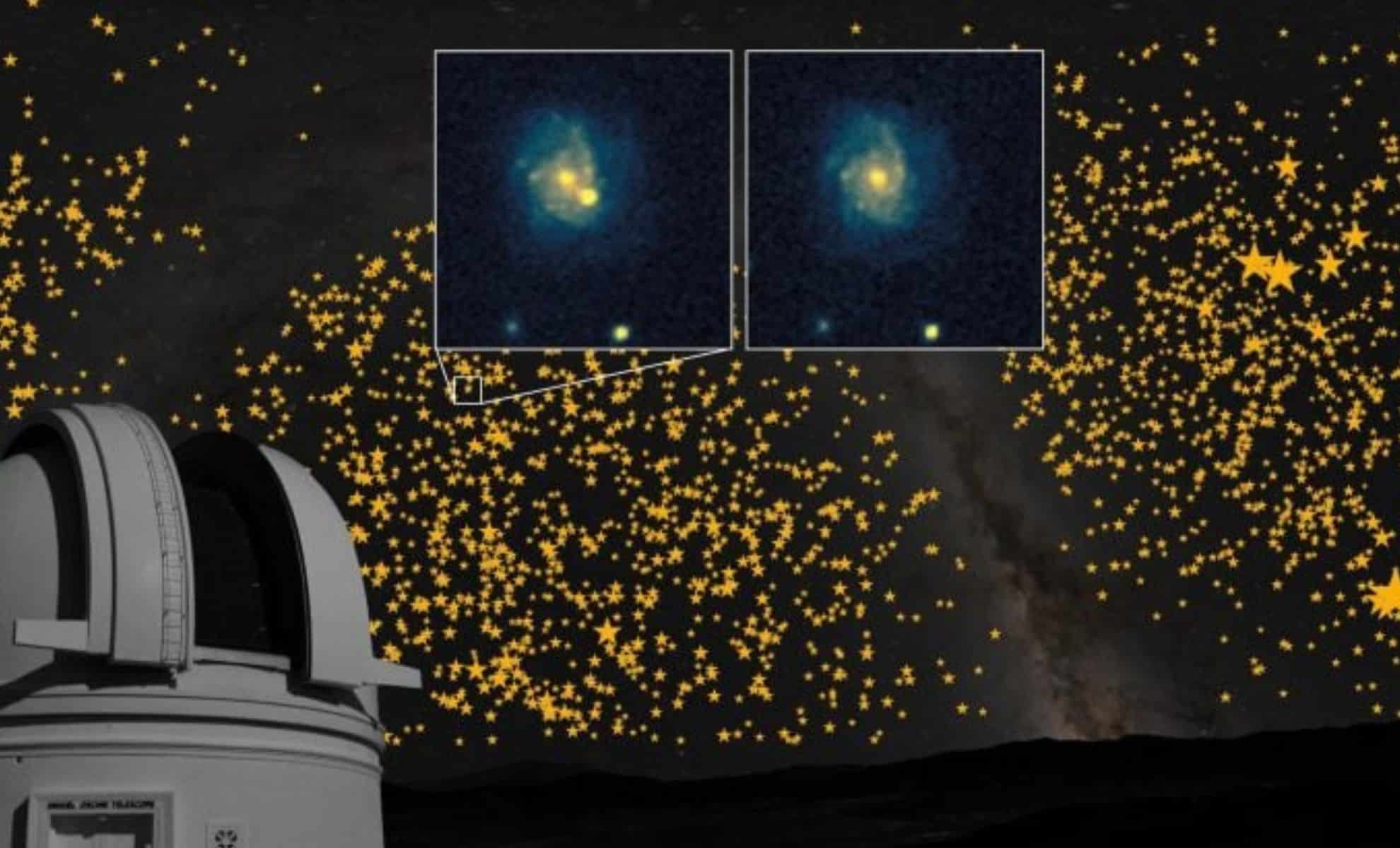
In a groundbreaking advancement in astrophysics, the analysis of approximately 4,000 supernovae is uncovering fresh insights into the elusive phenomenon of dark energy and the overall expansion of the universe. These supernovae, resulting from the explosive demise of stars, have been essential for determining cosmic distances, providing researchers with vital clues about the universe’s structure and the forces propelling its accelerated expansion. However, recent discoveries of an unanticipated diversity in the processes behind white dwarf supernovae—previously thought to adhere to a consistent pattern—have led to a significant reassessment of their utility in cosmic studies.
For many years, the explosions of white dwarfs at the conclusion of their life cycles have served as vital instruments for measuring distances in the universe. These stellar explosions were long viewed as dependable standard candles—objects with a known brightness that could accurately gauge immense distances in space. They also enabled scientists to assess the influence of dark energy, which is accelerating the universe’s expansion. However, the insights from the latest research raise questions about the reliability of utilizing these supernovae as distance indicators, potentially altering our comprehension of the universe’s development.
A Major Breakthrough in Stellar Explosion Understanding
This significant discovery originates from 4,000 supernovae monitored by the Zwicky Transient Facility (ZTF), a state-of-the-art sky survey system capable of scanning the sky rapidly and deeply. Using this data, researchers have identified a surprising array of explosive behaviors among white dwarf stars. While these supernovae were once assumed to follow a predictable explosion pattern, new findings indicate a remarkably broad spectrum of explosions, ranging from dim, barely perceptible flashes to extraordinarily bright outbreaks that remain visible for months, or even years.
“ZTF’s remarkable capacity to scan the sky quickly and profoundly has enabled the detection of new stellar explosions up to one million times fainter than the faintest stars seen by the naked eye,” notes Prof. Kate Maguire, a lead researcher on the project. This capability to capture extremely faint stellar events has significantly enhanced our understanding of these cosmic phenomena. The data from ZTF suggests that these explosions can originate from various scenarios—ranging from violent stellar collisions to the consumption of one star by another in binary systems. The far-reaching consequences of this diversity may influence how effectively these explosions can be utilized as standard measurements for cosmic distances.
A More Intricate Perspective on White Dwarf Supernovae
The findings have highlighted the unexpected variety in the explosive mechanisms of white dwarf stars. Traditionally, these stars, remnants of medium-sized stars, were thought to explode in a relatively uniform manner. However, the recent research involving over 4,000 supernovae events demonstrates considerable variation in the intensity and duration of these explosions. Some events are so faint they are nearly undetectable, whereas others are so luminous that they shine persistently for extended durations.
“The range of explosion types exhibited by white dwarf stars is much broader than had been anticipated, resulting in events that vary from barely visible to those bright enough to linger in the sky for months or even years,” asserts Prof. Maguire. This extensive variety of explosion types challenges the longstanding view that all white dwarf supernovae undergo the same process. Consequently, researchers may need to reevaluate the efficacy of using these stellar explosions as distance markers, a crucial element in comprehending the expansion rate of the universe.
Consequences for Dark Energy Studies
The insights gained from this study significantly impact our grasp of dark energy—the mysterious entity driving the accelerated expansion of the universe. Supernovae have long been indispensable in measuring the effects of dark energy, providing critical data for understanding how quickly the universe is expanding. If these supernovae are not as uniform as previously believed, it could jeopardize our ability to accurately gauge dark energy.
The variability of white dwarf explosions introduces uncertainty into the cosmic distance ladder, the methodology that scientists employ to measure vast distances in space. Given that these supernovae have been relied upon for accurately assessing the universe’s dimensions, the newfound diversity in their explosions raises questions about their continued utility for this purpose. The potential lack of uniformity in explosion types suggests that scientists may need to explore alternative approaches for measuring the universe’s expansion, or refine current methodologies to account for these newly recognized variations.
A New Chapter in Cosmic Exploration
The revelation of a striking variety in the behavior of exploding white dwarf stars is ushering in exciting prospects for further research, but it also presents challenges for our established cosmological models. As our understanding of these stellar explosions deepens, it could pave the way for revisions in how we approach the universe’s expansion and the measurement of dark energy. This groundbreaking research, conducted by a global team of scientists, truly unlocks new possibilities for understanding the complex forces shaping our cosmos. With ongoing data collection from the Zwicky Transient Facility and other observatories, we can anticipate additional revelations regarding the dynamic nature of these stellar explosions and their influence on the universe’s evolution.
While the full implications of these discoveries on dark energy research remain to be seen, it is evident that the universe is more intricate and unpredictable than we had previously imagined. With each new finding, we are gradually constructing a more elaborate and precise understanding of the cosmos, challenging our existing beliefs and expanding the frontiers of scientific knowledge. The enigma of dark energy persists, but with the inclusion of 4,000 supernovae in our studies, we move closer to uncovering the true nature of the forces shaping our universe.
This article has been adapted from the following sources. Note: Content may have been modified for clarity and brevity. For further inquiries, please reach out to the original source.
Have feedback? Share your thoughts in the comments!
Enjoyed this article? Subscribe to our free newsletter for captivating stories, exclusive content, and the latest updates.









